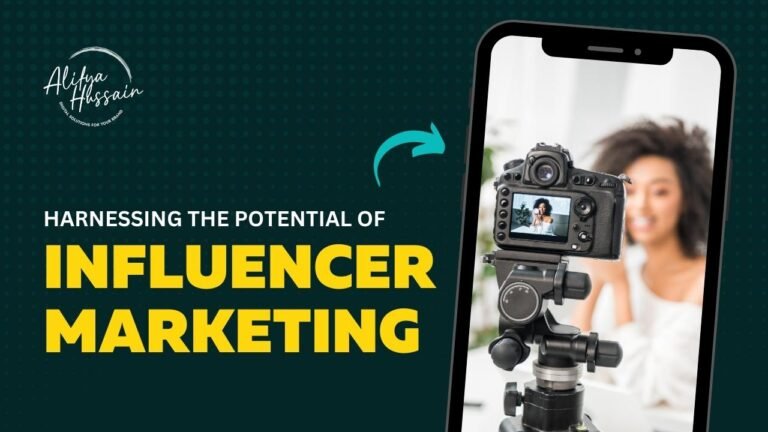Maximizing ROI with Conversion Rate Optimization
Introduction
In the fast-paced digital landscape, businesses are constantly striving to maximize their return on investment (ROI) and drive more conversions. One powerful strategy that can help achieve these goals is Conversion Rate Optimization (CRO). By focusing on optimizing your website or landing page to improve conversion rates, you can unlock untapped potential and boost your business’s success.

Table of Contents
- Introduction
- Understanding Conversion Rate Optimization
- Definition and Importance
- Benefits of Conversion Rate Optimization
- Key Elements of Conversion Rate Optimization
- Data Analysis and Insights
- User Experience (UX) Optimization
- A/B Testing and Experimentation
- Strategies for Effective Conversion Rate Optimization
- Targeted Landing Pages
- Compelling Call-to-Action (CTA)
- Streamlined Checkout Process
- Personalization and Segmentation
- Tools and Technologies for Conversion Rate Optimization
- Heatmaps and Click Tracking
- User Feedback and Surveys
- A/B Testing Platforms
- Measuring and Analyzing Conversion Rate Optimization
- Key Metrics to Track
- Analyzing and Interpreting Data
- Case Studies: Successful Conversion Rate Optimization Campaigns
- Example 1: Company X Increases Conversions by 30%
- Example 2: E-commerce Store Y Improves Cart Abandonment Rate
- Common Conversion Rate Optimization Mistakes to Avoid
- Lack of Proper Testing and Tracking
- Overcomplicated User Journey
- Ignoring Mobile Optimization
- Conclusion
- Contact Alifya Hussain for Expert Conversion Rate Optimization
Understanding Conversion Rate Optimization
Definition and Importance
Conversion Rate Optimization is the process of enhancing the user experience and fine-tuning elements on your website or landing page to increase the percentage of visitors who convert into customers or take desired actions. It involves analyzing data, conducting experiments, and making iterative improvements to maximize conversions.
Conversion Rate Optimization is vital for businesses as it helps improve the efficiency of marketing campaigns, enhances user satisfaction, and ultimately leads to increased revenue and ROI. It enables you to make data-driven decisions and optimize your website to meet the needs and expectations of your target audience.
Benefits of Conversion Rate Optimization
Implementing a robust Conversion Rate Optimization strategy offers several key benefits:
- Increased Conversions: By identifying and addressing barriers that prevent users from converting, you can improve conversion rates and achieve higher sales and lead generation.
- Cost-Effectiveness: Instead of solely focusing on driving more traffic, CRO allows you to make the most of your existing traffic and marketing efforts, resulting in a higher return on investment.
- Enhanced User Experience: CRO involves optimizing various aspects of your website, such as page speed, navigation, and design, to create a seamless and engaging user experience.
- Data-Driven Decision Making: Conversion Rate Optimization relies on data analysis and experimentation, providing valuable insights into user behavior and preferences. This data helps you make informed decisions and prioritize improvements.
- Competitive Advantage: By continually optimizing your conversion funnel, you can gain a competitive edge and differentiate your business from competitors in the market.
Key Elements of Conversion Rate Optimization
To effectively maximize ROI with Conversion Rate Optimization, it’s important to focus on the following key elements:
Data Analysis and Insights
Before implementing any changes, it’s crucial to analyze data and gather insights about user behavior, preferences, and pain points. Utilize web analytics tools to track user interactions, such as clicks, scroll depth, and form submissions. Identify areas of improvement and potential bottlenecks in the conversion funnel.
User Experience (UX) Optimization
A seamless and user-friendly experience is essential for driving conversions. Optimize your website’s UX by improving page load times, simplifying navigation, and ensuring mobile responsiveness. Clear and persuasive messaging, intuitive layouts, and visually appealing designs can also enhance the overall user experience.
A/B Testing and Experimentation
A/B testing involves comparing two versions of a web page or element to determine which one performs better in terms of conversions. Test different variations of headlines, CTA buttons, colors, layouts, and other elements to identify the most effective combination. Continuously experiment and iterate based on data-driven insights.
Strategies for Effective Conversion Rate Optimization
Now, let’s explore some effective strategies for maximizing conversions through Conversion Rate Optimization:
Targeted Landing Pages
Create targeted landing pages that align with your marketing campaigns and audience segments. Customized landing pages that deliver specific messages and offers catered to a particular audience can significantly improve conversions. Ensure the landing pages are optimized for relevant keywords and provide a clear path for users to convert.
Compelling Call-to-Action (CTA)
A strong and persuasive call-to-action is critical for guiding users towards conversion. Use clear, action-oriented language and visually appealing design to make your CTAs stand out. Test different variations of CTAs to find the most compelling and effective ones.
Streamlined Checkout Process
For e-commerce businesses, optimizing the checkout process is crucial to minimize cart abandonment and maximize conversions. Simplify the steps required to complete a purchase, provide multiple payment options, and offer guest checkout to reduce friction. Clearly communicate shipping costs, return policies, and security measures to build trust with your customers.
Personalization and Segmentation
Tailor your marketing messages and website experiences based on user preferences, demographics, and behavior. Personalization can significantly improve engagement and conversion rates. Utilize tools that allow you to segment your audience and deliver personalized content, product recommendations, and offers.
Tools and Technologies for Conversion Rate Optimization
To streamline your Conversion Rate Optimization efforts, leverage the following tools and technologies:
Heatmaps and Click Tracking
Heatmap tools like Hotjar and Crazy Egg provide visual representations of user interactions on your website. They show where users click, how far they scroll, and which elements they engage with the most. This data helps identify areas of interest and potential optimization opportunities.
User Feedback and Surveys
Tools like Qualaroo and SurveyMonkey allow you to gather qualitative feedback from your website visitors. Implement surveys to understand user preferences, pain points, and suggestions for improvement. Use this feedback to guide your optimization efforts and prioritize changes.
A/B Testing Platforms
Platforms such as Optimizely and Google Optimize enable you to conduct A/B tests and experiments. These tools help you compare different variations of your website or specific elements to determine which ones drive higher conversions. Implementing A/B testing allows you to make data-driven decisions and continuously improve your website’s performance.
Measuring and Analyzing Conversion Rate Optimization
To measure the success of your Conversion Rate Optimization efforts, track the following key metrics:
Key Metrics to Track
- Conversion Rate: Measure the percentage of visitors who take the desired action, such as making a purchase or submitting a lead form.
- Bounce Rate: Monitor the percentage of visitors who leave your website after viewing only a single page. A high bounce rate may indicate issues with user experience or relevance.
- Average Session Duration: Track how long visitors spend on your website. Longer sessions often indicate higher engagement and interest.
- Click-Through Rate (CTR): Measure the percentage of users who click on a specific link or CTA. A higher CTR indicates that your messaging and design are compelling.
Analyzing and Interpreting Data
Regularly analyze and interpret the data collected through web analytics tools, heatmaps, and A/B testing platforms. Look for patterns, trends, and areas of improvement. Use data-driven insights to make informed decisions and prioritize your Conversion Rate Optimization efforts.
Case Studies: Successful Conversion Rate Optimization Campaigns
To illustrate the impact of Conversion Rate Optimization, let’s take a look at two successful case studies:
Example 1: Company X Increases Conversions by 30%
Company X implemented Conversion Rate Optimization strategies by simplifying their checkout process and improving their CTAs. They also conducted A/B tests to optimize their product page layout and messaging. As a result, they saw a 30% increase in conversions and a significant boost in revenue.
Example 2: E-commerce Store Y Improves Cart Abandonment Rate
E-commerce Store Y analyzed their cart abandonment data and identified several pain points in their checkout process. By streamlining the steps, providing clearer shipping information, and offering guest checkout, they successfully reduced their cart abandonment rate by 20% and saw a substantial increase in completed purchases.
Common Conversion Rate Optimization Mistakes to Avoid
While implementing Conversion Rate Optimization, be mindful of the following common mistakes:
Lack of Proper Testing and Tracking
Failing to conduct thorough A/B testing and track key metrics can hinder your optimization efforts. Make sure you have a systematic testing plan in place and regularly monitor relevant data to measure the impact of your changes accurately.
Overcomplicated User Journey
An overly complex user journey can confuse and frustrate visitors, leading to lower conversion rates. Keep your website navigation simple and intuitive, guiding users seamlessly towards the desired actions.
Ignoring Mobile Optimization
With the increasing number of mobile users, optimizing your website for mobile devices is crucial. Neglecting mobile optimization can result in a poor user experience and missed conversion opportunities. Ensure your website is responsive, loads quickly on mobile devices, and offers a smooth browsing experience.
Conclusion
Conversion Rate Optimization is a powerful strategy for maximizing your ROI and driving more conversions. By optimizing your website’s user experience, implementing targeted strategies, and leveraging data-driven insights, you can enhance conversion rates and achieve business success.
Remember to continuously test, analyze, and iterate your Conversion Rate Optimization efforts based on user behavior and preferences. Avoid common mistakes and stay up-to-date with the latest tools and techniques in the field.
Contact Alifya Hussain, an expert in Conversion Rate Optimization, to unlock the full potential of your online business and take your conversions to new heights.




